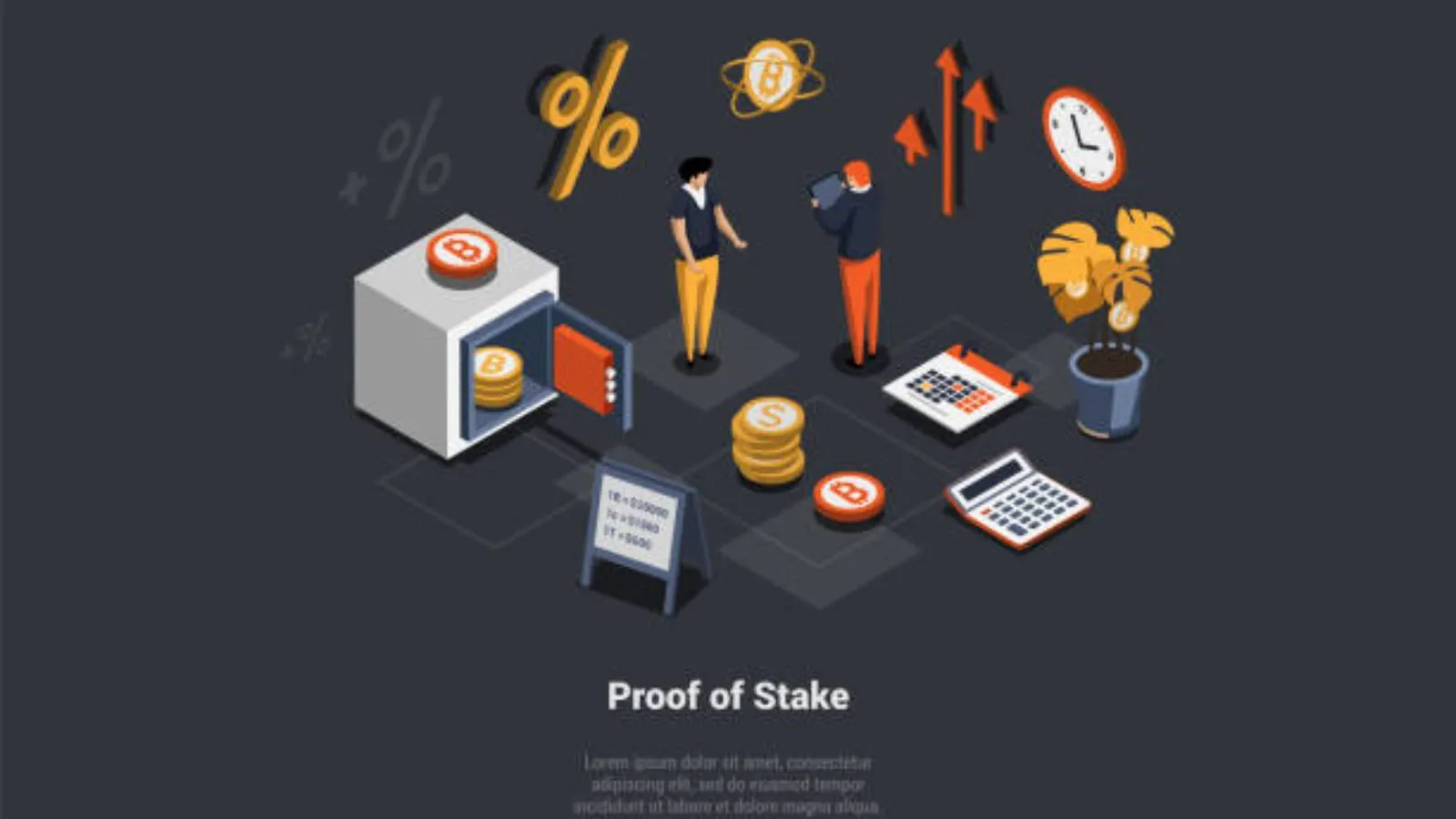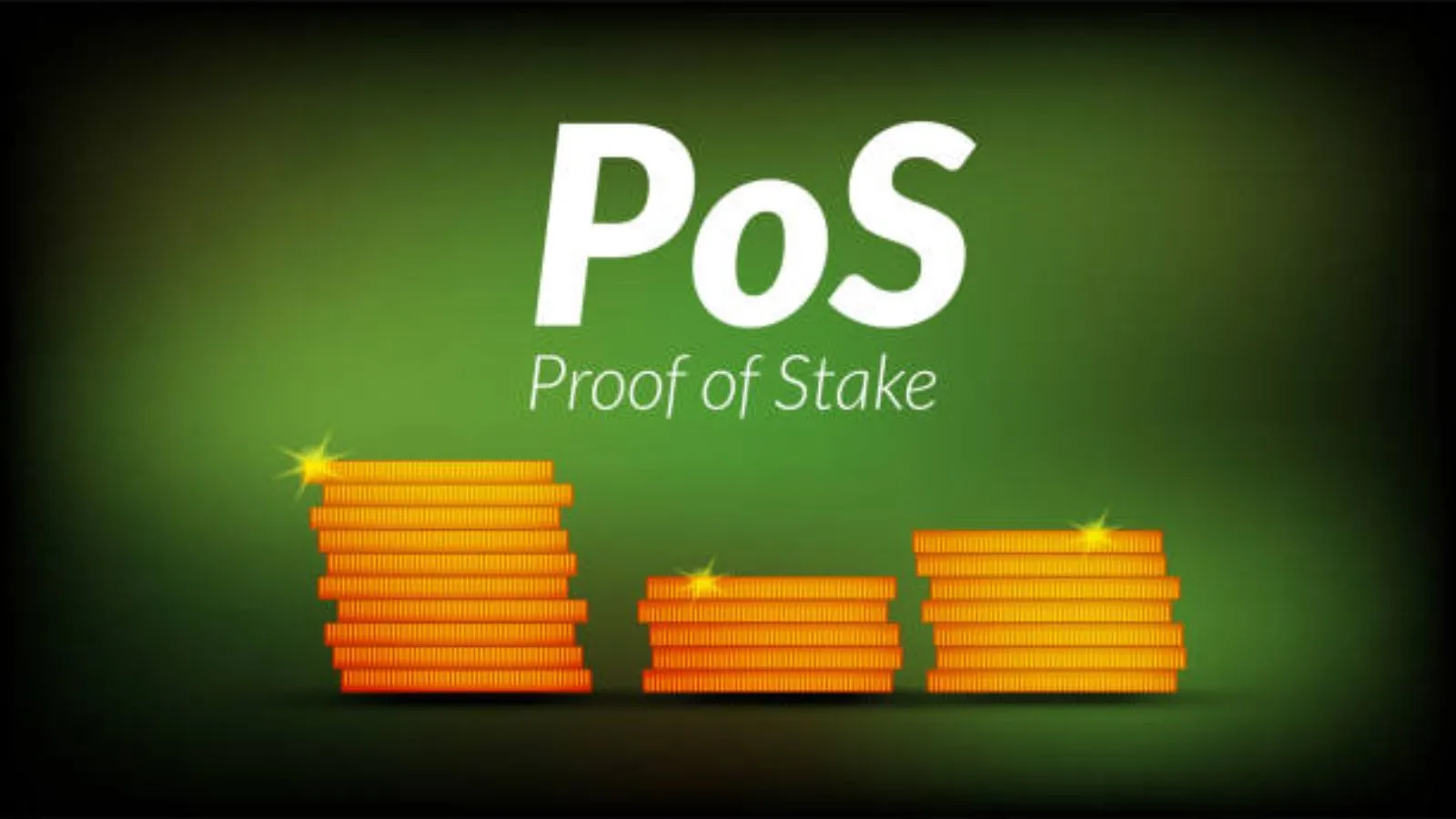Cryptocurrency staking has become a hot topic, especially for those looking to earn passive income with their crypto holdings. But what exactly is proof of stake, and how can it help you make money? Is it risky? What do you need to know before jumping in?
Let’s explore the ins and outs of staking, by understanding What is Proof of Stake and how to earn passive income — using Ethereum as our primary example.
Basics of Staking
To grasp why staking has become an essential part of the cryptocurrency landscape, we need to go back to the early days of Bitcoin and other digital currencies. Back then, the primary way to keep the blockchain running smoothly was through a process called mining.
Imagine a vast, open ledger—this is basically what a blockchain is. It’s a digital book that records all the transactions happening within the network.
To keep this ledger updated, powerful computers race to solve complex mathematical puzzles. The first computer to crack the code gets to add a new “block” of transactions to the blockchain and earns some cryptocurrency as a reward. This is what we call “Proof of Work” (PoW).
The Downsides of Mining: More Than Just High Electricity Bills
At first, mining seemed like a clever and fair way to keep things decentralized. But, it didn’t took long for its flaws to show. For one, mining requires a massive amount of electricity — some estimates suggest that the total energy consumption of Bitcoin mining rivals that of a small country.
The process also needs specialized hardware, which is expensive and often hard to come by. And then there’s the element of chance; even if you invest in the best equipment, there’s no guarantee you’ll solve the puzzle first.
With all these challenges, it became clear that there needed to be a more efficient way to maintain the blockchain. Enter Proof of Stake (PoS).

What is Proof of Stake (PoS)?
Proof of Stake offers an alternative approach. Instead of requiring huge amounts of computing power and electricity, Proof of Stake relies on a process called “staking.” Here’s how it works: participants, known as “validators,” lock up a certain amount of cryptocurrency in a digital wallet. This locked-up amount, known as a “stake,” serves as collateral. Think of it as a deposit that says, “I promise to play fair.”
In exchange for locking up their funds, these validators get a chance to be randomly chosen to add the next block of transactions to the blockchain. If they’re selected, they earn a reward — newly minted cryptocurrency.
Fairness and Rewards: How Proof of Stake Levels the Playing Field
So, is staking just about who has the most money?
Not quite.
The system is designed to introduce an element of randomness to ensure fairness. While those who stake more do have better odds of being selected to validate transactions, it’s not a guarantee. This randomness prevents the system from being dominated by a few wealthy participants and keeps the process decentralized.
Why Choose Proof of Stake? The Key Advantages
One of the biggest reasons why Proof of Stake has gained popularity is its efficiency. Unlike mining, which demands a constant supply of electricity and advanced hardware, staking only requires participants to keep their computers running.
This cuts down on energy consumption dramatically. It also lowers the barrier to entry since anyone with a standard computer and some cryptocurrency can potentially become a validator.
Proof of Stake is also seen as a more environmentally friendly alternative. With growing concerns about climate change and the carbon footprint of technology, the lower energy requirements of Proof of Stake make it a preferred choice for new cryptocurrencies.
Is Staking Risky?
Staking can indeed be a great way to earn passive income, but it comes with its share of risks. One of the primary risks is “slashing,” where you can lose part or all of your staked amount if you act maliciously or try to cheat the system. Slashing is a penalty designed to deter bad behavior, but it also adds an element of risk for participants.
Staking can often require locking up your funds for a significant period. For example, in Ethereum, your staked Ether (ETH) is locked until the next major network upgrade, which could take several months or even years.
This lock-up period limits your liquidity and can be a disadvantage if you need quick access to your funds or if the value of ETH drops during this time.
If you’re someone who prefers having easy access to your assets, staking may not be the best fit.

Staking on Ethereum: How Does it Work?
Ethereum recently shifted from a Proof of Work (PoW) to a Proof of Stake (PoS) system with the introduction of Ethereum 2.0. Under this new system, becoming a validator — a role similar to a miner in PoW — requires locking up 32 ETH as collateral.
This amount may be too high for many, but there are ways to participate with smaller amounts by joining a staking pool. Pools allow you to combine your ETH with others to meet the 32 ETH requirement, which makes it more accessible for smaller holders.
Validators on Ethereum are chosen randomly to propose new blocks, but several factors influence this selection, including the amount of ETH staked, how long it has been staked, and the security of the validator’s node.
The rewards for staking depend on how much ETH is currently staked across the network; generally, more staked ETH means lower individual rewards. The potential returns can vary greatly, depending on network conditions and the total amount of staked ETH.
Risks and Considerations
There are other risks to be aware of, such as the potential for centralization. With the growth of liquid staking services like Lido, where users can easily stake their ETH and receive a token (stETH) representing their stake, a large portion of the staked ETH may become concentrated in a few entities.
This could potentially compromise the decentralized nature of Ethereum and its security, especially if these entities gain too much control.
Staking on Ethereum isn’t without its technical challenges. Validator nodes require continuous uptime and reliable internet connections to avoid penalties.
If a validator fails to stay online or makes errors in validating transactions, it could face fines or lose its stake. This makes staking more suitable for those with technical know-how or those who are willing to rely on professional staking services, which come with their own costs and risks.

Alternatives to Running Your Own Validator
Running your own validator might sound appealing, especially if you’re tech-savvy and have the required 32 ETH, but it’s not for everyone. For starters, it demands a good deal of technical knowledge, a dedicated computer system that’s online 24/7, and the ability to manage any software or hardware issues that arise.
Also, there’s a bit of a waiting game involved — only 900 new validators can be added to the Ethereum network each day, so there might be a delay before you even get started.
Luckily, there are other ways to participate in staking without going through the hassle of managing a validator yourself. These alternatives are perfect if you’re still eager to earn staking rewards but prefer a more hands-off approach.
Let’s look at some of these options in more detail.
Staking Through Cryptocurrency Exchanges
One of the most straightforward alternatives is using a staking service provided by cryptocurrency exchanges. The platforms handle all the technical aspects for you — you simply deposit your ETH, and they take care of the rest. The exchange runs the validator nodes, manages the hardware, deals with any issues, and distributes the staking rewards to you.
Using an exchange’s staking service is like hiring a professional to manage your investments; it’s convenient, hassle-free, and allows you to stake smaller amounts of ETH without having to meet the 32 ETH requirement.
But, this convenience comes at a cost. When you stake through an exchange, you’re actually handing over control of your funds to the exchange. This can be risky because, in the event of a security breach or a regulatory issue, your staked assets could be at risk.
Exchanges also typically charge fees for their services, which can reduce your overall staking rewards. It’s important to check the fee structure and consider whether the reduced returns are worth the convenience. For many, the peace of mind that comes from not having to manage the technical details is worth the trade-off.
Joining a Staking Pool
Another popular option is to join a staking pool. Think of a staking pool as a group effort; you, along with other participants, combine your ETH to increase your collective chances of being selected as a validator. In return, you share in the staking rewards proportionally to the amount of ETH you contribute to the pool.
Joining a staking pool can be a great choice if you don’t have the full 32 ETH required to run your own validator or if you simply don’t want the hassle of managing one. Staking pools provide a way to earn rewards with a smaller initial investment and without having to worry about the technical complexities.
Before jumping into a staking pool, it’s wise to do a bit of homework. Different pools have different fees, rules, and reputations. Some pools charge a flat fee, while others take a percentage of your rewards. It’s important to read the fine print to understand how fees are structured and what percentage of your earnings will go to the pool operators.
It’s also worth considering the reputation of the pool. A well-known, trusted pool is less likely to engage in any behavior that could jeopardize your funds. Take some time to read reviews, check out user feedback, and make sure the pool has a good track record.
You should also look into any requirements for joining — some pools have minimum stake amounts, while others might have specific rules for participation.
Liquid Staking: A New Way to Stay Flexible
For those who value liquidity — the ability to access their funds at any time — liquid staking might be the best option. Liquid staking platforms like Lido allow you to stake your ETH while still keeping your assets relatively accessible.
When you stake through a platform like Lido, you receive a token, such as stETH, which represents your staked ETH and can be traded, sold, or used in DeFi (Decentralized Finance) applications.
This approach provides the best of both worlds: you earn staking rewards while maintaining the flexibility to use or trade your staked ETH. As with other, liquid staking comes with its own set of risks. The value of your liquid staking token (like stETH) can fluctuate, and you rely on the liquid staking provider’s infrastructure and security.
Weighing Your Options
Each of these alternatives comes with its pros and cons. If you value convenience and don’t mind paying a fee, staking through an exchange could be the simplest option. If you’re looking to pool your resources with others and maximize your chances of earning rewards, a staking pool might be the way to go. And if you want to keep your funds more flexible, liquid staking offers a unique middle ground.
Eventually, the best choice depends on your individual goals, risk tolerance, and how much control you want over your assets. Staking can be an exciting way to participate in the growth and security of the Ethereum network, but it’s important to choose a method that aligns with your comfort level and investment strategy.

Validator as a Service (VaaS)
If you’re interested in the benefits of running your own Ethereum validator but don’t want to handle the technical challenges, a “Validator as a Service” (VaaS) might be just what you’re looking for. These services offer a way to participate in Ethereum staking without the need to set up, manage, and maintain a validator node yourself.
Let’s dive deeper into what VaaS is, how it works, and what it could mean for your crypto journey.
What is Validator as a Service?
Simply put, VaaS is a third-party service that manages the technical aspects of running a validator for you. It takes care of everything from setting up the necessary software and hardware to managing the node’s operation and maintenance.
All you need to do is provide the 32 ETH required for staking, and the VaaS provider does the rest. This approach eliminates the need for deep technical expertise and the risk of penalties due to downtime or errors.
There are two main types of VaaS: custodial and non-custodial.
- Custodial VaaS: In this model, the service provider takes full control of the validator node and manages all aspects of staking. They collect validator rewards and then distribute them to the node owner, often after deducting their fees. This model is more hands-off but requires trust in the service provider.
- Non-custodial VaaS: Here, the service provider only manages the node’s operation but the validator retains full control over their funds and staking decisions. This model is ideal for those who want to maintain more control over their assets while offloading the technical burdens.
Key Advantages of Using VaaS
1. Lower Barrier to Entry: Running a validator node independently requires significant technical know-how, expensive hardware, and the ability to handle any technical issues that arise.
VaaS platforms remove these hurdles by providing an easy-to-use interface and managing everything on your behalf. This allows more people to participate in Ethereum staking without needing to become blockchain experts.
2. Security and Reliability: VaaS providers typically offer robust security measures to protect your staked funds. They handle complex tasks like implementing firewall protection, encrypting data, and safeguarding validator keys.
Since downtime can result in penalties or “slashing” (where a portion of your stake is forfeited), having a professional team manage the validator helps minimize these risks.
3. Reduced Maintenance and Monitoring Effort: Maintaining a validator involves monitoring performance, ensuring uptime, and updating software. With VaaS, the provider takes care of all of this for a fee, so you don’t have to worry about constant monitoring or troubleshooting.
4. Flexibility and Scaling: Many VaaS platforms offer options to scale your staking activities easily. Whether you want to increase the number of nodes or switch between different cloud services, these platforms provide the tools needed to manage your validator with minimal effort.

What’s Next for Ethereum Staking?
As Ethereum continues to evolve, we’re likely to see further changes in staking mechanics, potential reward structures, and overall accessibility. The upcoming updates might include mechanisms to lower the staking requirement (currently 32 ETH) or introduce new incentives for smaller stakeholders to participate.
The network could also develop new ways to improve scalability and user experience, making staking a more streamlined process for everyone.
In short, if you’re considering staking, it’s not just about the potential returns. It’s also about understanding the risks, the potential for long-term growth, and how comfortable you are with the idea of locking up your funds.
Staking can be a great way to contribute to the Ethereum network and earn rewards, but it requires careful thought and a solid understanding of the landscape.
Ethereum’s shift to Proof of Stake is just one chapter in a much larger story. Whether you decide to jump in now or wait to see how things unfold, this transition marks a pivotal moment in the world of cryptocurrency
Staking offers a unique way to earn income from your cryptocurrency investments. Whether you’re running your own validator, joining a staking pool, or using an exchange’s service, there are options to fit various levels of experience and capital.
But remember, every opportunity comes with its own set of risks. Make sure you do your homework, understand the mechanics, and choose the option that aligns best with your goals and risk tolerance.




Recent Comments